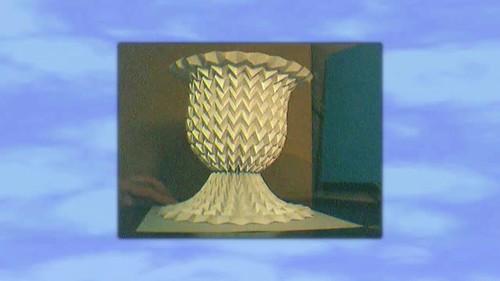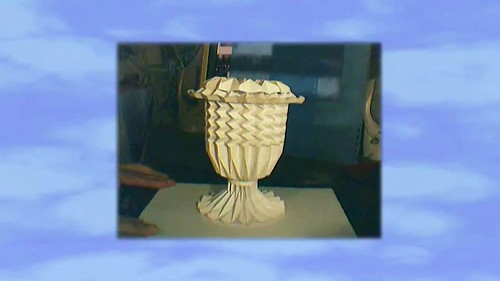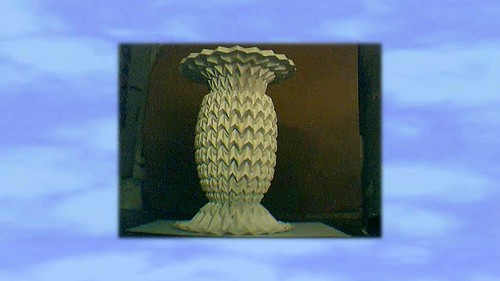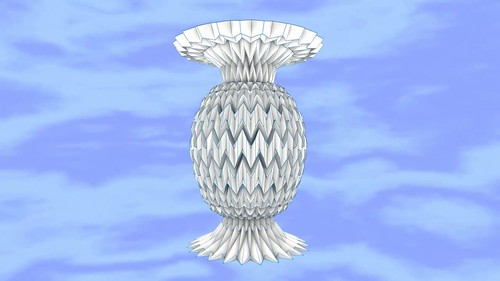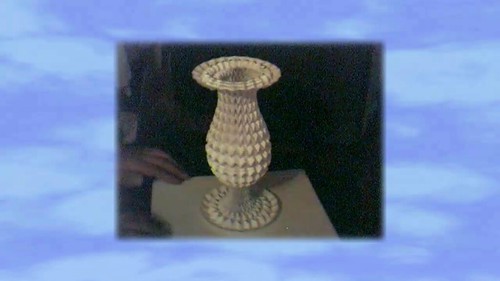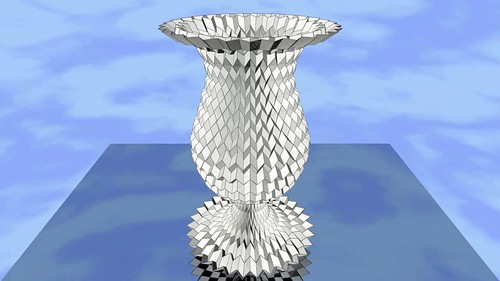La base del patrón Waterbomb se combina con una serie de cuadrados regulares, creando un modelo tridimensional flexible y curvado. Si el largo del patrón se extiende la superficie curvada se incrementa.
 |
Base clásica waterbomb |
 |
| Base clásica waterbomb combinada con una serie de cuadrados regulares |
Teselación waterbomb de cuadrados regulares colapsado y expandido con curva.
Iso-área de la teselación waterbomb de cuadrados regulares colapsados y expandido plano.
Como resultado de las tensiones residuales en los pliegues, la teselación waterbomb con cuadrados regulares al plegarse adquiere forma cilíndrica sobre los ejes con mínima energía de pliegue, la auto-tensión hace que sea biestable en las dos direcciones ortogonales
Para mejores resultados usar un papel relativamente rigido. A continuación se muestra una cuadricula de 8 x 8 al final se mostrara una cuadricula de 16 * 16.
Se debe preparar el papel, todo el doblez en valle se pliega como muestra el patrón de pliegue, este representa la base waterbomb. La mejor forma de hacerlo es dar vuelta al papel y después crear los pliegues de montaña.
Iniciar en la parte posterior del papel por una de las esquinas y seguir el colapso a lo largo de los nuevos pliegues
Se ve ligeramente el doblez de todos los pliegues, por lo que adquiere una ligera forma tridimensional.
Volver a las esquinas y empezar a colapsar las bases waterbomb, juntándolas con mas fuerza. Esta acción requiere mantener las secciones dobladas juntas, mientras se pliega el resto.
Colocar el modelo de teselados sobre una superficie plana. Aplicando tensión se obliga a reducir la curva. Sostener el papel a los extremos y empujar para juntar el patrón. Pellizcar los pliegues verticales uno por uno, para reforzar lo pliegues ya preparados y dar al papel memoria de forma.
Se puede utilizar clips de papel u otro tipo de pinzas adecuadas para mantener el patrón plegado durante el proceso.
Como consejo personal y basado en mi poca experiencia recomiendo que si se trata de plegar patrones extensos trate de mantener esta forma de acordeón, alternando los pliegues en cada etapa del proceso de plegado, el cual debe realizarse por secciones diagonales.














